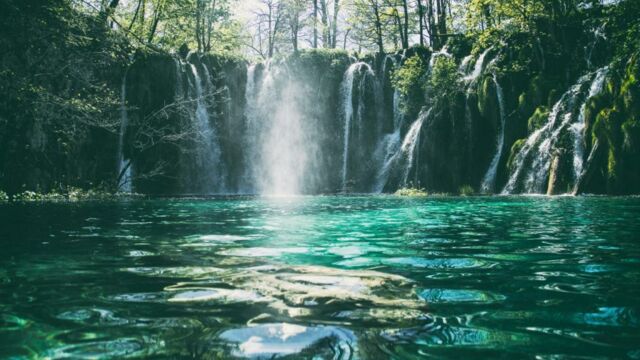While some waterfalls, such as the 40 km-wide Victoria Falls, are impressive in their sheer size, on paper, Venezuela's Angel Falls is the world's highest waterfall at 979 metres high. El Salto del Ángel, as it's called in the original version, would appear to be indisputable. However, the Earth being what it is - 70% made of water, among other things - it's only fair to give credit where credit is due, and declare that no, she's not the champion.
Discover our latest podcast
Underwater waterfall
Incredible as it may seem, the world's largest waterfall is located... underwater! Known as the Denmark Strait Cataract, it lies in the depths between southeastern Greenland and eastern Iceland. And at 3.5 kilometers high, the Angel Falls waterfall pales in comparison.
Stretching over a width of 160 kilometers, this XXL waterfall, discovered in 1989, also beats Victoria Falls to the punch, ensuring its place as the overall winner. According to the U.S. National Oceanic and Atmospheric Administration (NOAA), the Denmark Strait cataract has a flow rate of over 5 million cubic metres - the equivalent of 2,000 Niagara Falls. And that's just the beginning!
Read more:The 'Bloop': Here is everything you need to know about the most mysterious sound on Earth (VIDEO)
How is this possible?
The figures are pretty impressive, but how can a waterfall exist underwater? The answer lies in the difference in temperature. According to NOAA, cold water is denser than warm water. So when ocean currents meet, cold water will be projected under warmer water. Add to this an underwater depression and you get the Denmark Strait cataract.
But with global warming leading to a rise in sea and ocean temperatures, geoscientists such as Anna Sanchez Vidal from the University of Barcelona fear that there will be less and less cold water, which in time would have an impact not only on the waterfall's flow, but also on deep ecosystems and global climate regulation.
the Denmark Strait cataract as seen on google maps pic.twitter.com/6d27QHVgW1
— baydreamer 🐚 (@hiraethaquatica) August 14, 2020
Read more:What would dinosaurs look like if they were on Earth today?
This article has been translated from Gentside FR.
Sources used:
NOAA: Where is Earth’s Largest Waterfall?















